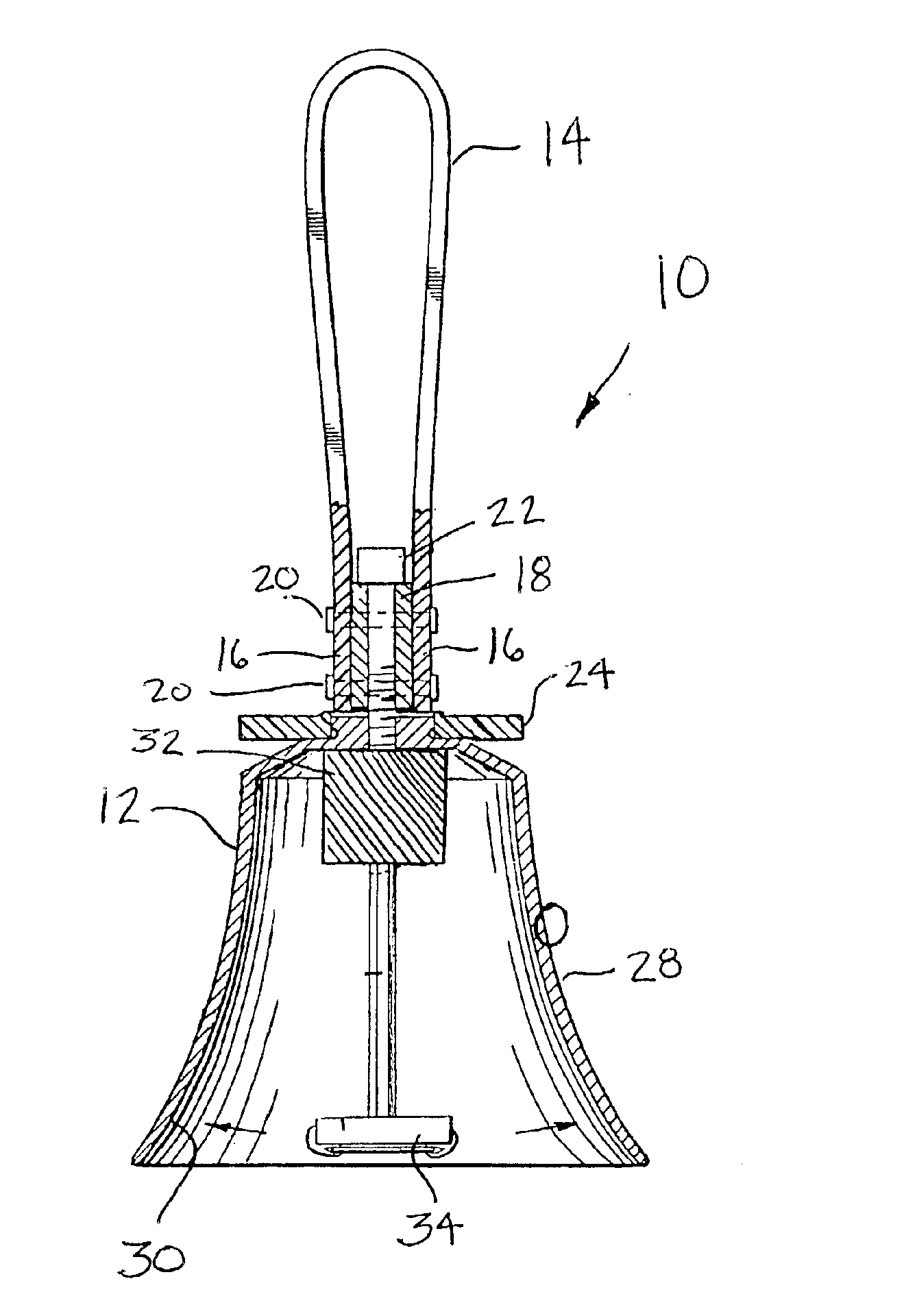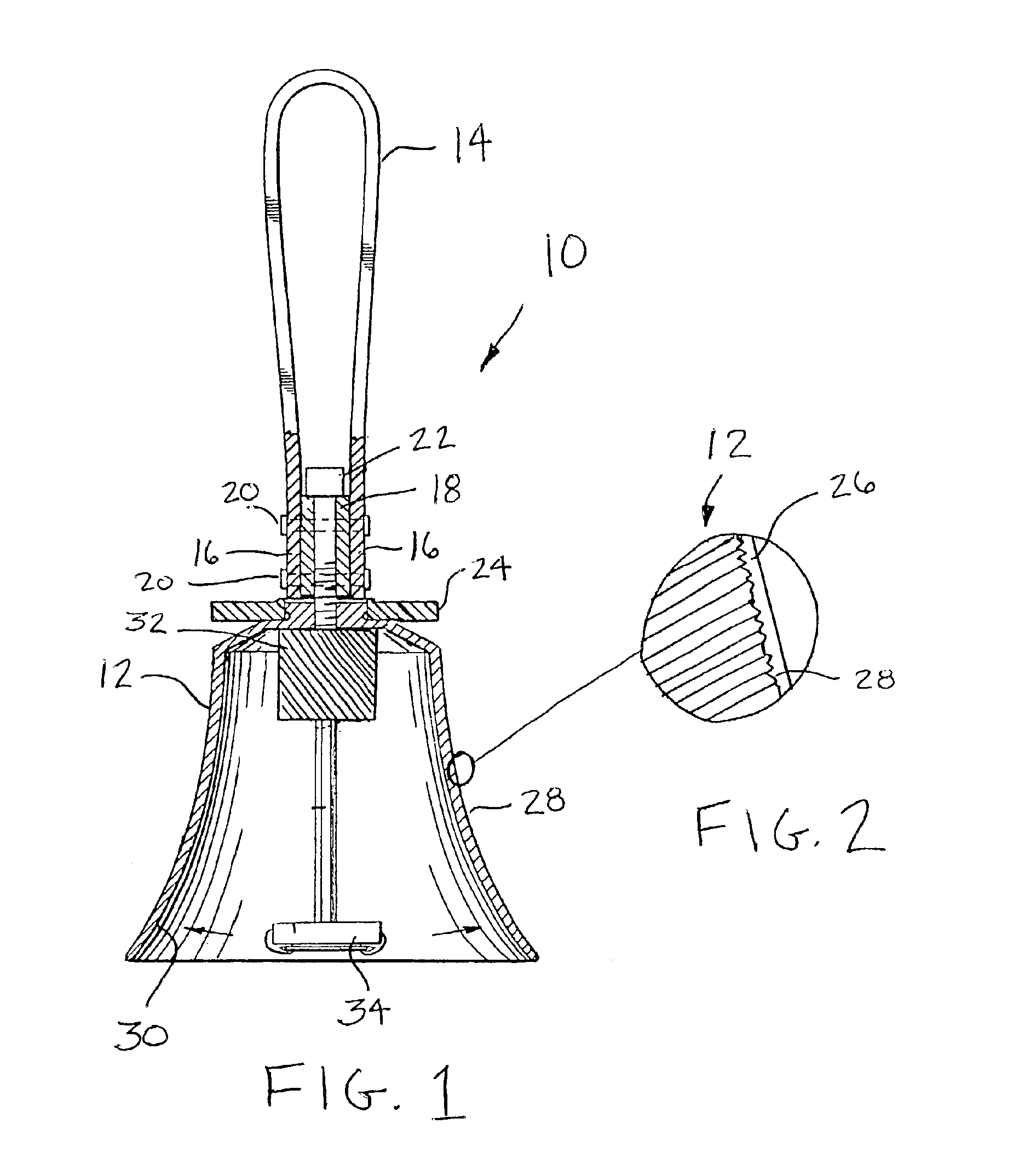Tarnish-resistant handbell and its method of manufacture
a handbell and tarnish-resistant technology, applied in the field of handbells, can solve the problems of undesirable dark spots on tarnish the surface of the bell body, etc., and achieve the effects of reducing the risk of tarnish
- Summary
- Abstract
- Description
- Claims
- Application Information
AI Technical Summary
Benefits of technology
Problems solved by technology
Method used
Image
Examples
Embodiment Construction
A handbell 10 made according to the present invention is illustrated in FIG. 1. The handbell 10 includes a bell body, or bell casting, 12. Typically, the bell body 12 is made of bronze such as a so-called “pure bronze bell metal” that comprises about 80% copper and 20% tin. Alternatively, the bell can be made of other metals, such as aluminum, and other alloys.
The bell body 12 interconnects to a handle 14, such as a strap-style handle having a pair of ends 16 that is secured to a handle block 18 with a set of rivets 20, or the like. A cap screw 22 secures the handle block 18 to a clapper assembly 32 positioned within the bell body 12. The clapper assembly 32 has a clapper 34 that can pivot and strike the inner surface 30 of the bell body 12. A handguard disc 24 extends between the handle 14 and bell body 12 to prevent accidental damping of the bell body 12 by contact of the hand of the player when the bell body 12 is struck during play.
The clapper assembly 32 can be provided in many...
PUM
 Login to View More
Login to View More Abstract
Description
Claims
Application Information
 Login to View More
Login to View More - R&D
- Intellectual Property
- Life Sciences
- Materials
- Tech Scout
- Unparalleled Data Quality
- Higher Quality Content
- 60% Fewer Hallucinations
Browse by: Latest US Patents, China's latest patents, Technical Efficacy Thesaurus, Application Domain, Technology Topic, Popular Technical Reports.
© 2025 PatSnap. All rights reserved.Legal|Privacy policy|Modern Slavery Act Transparency Statement|Sitemap|About US| Contact US: help@patsnap.com


